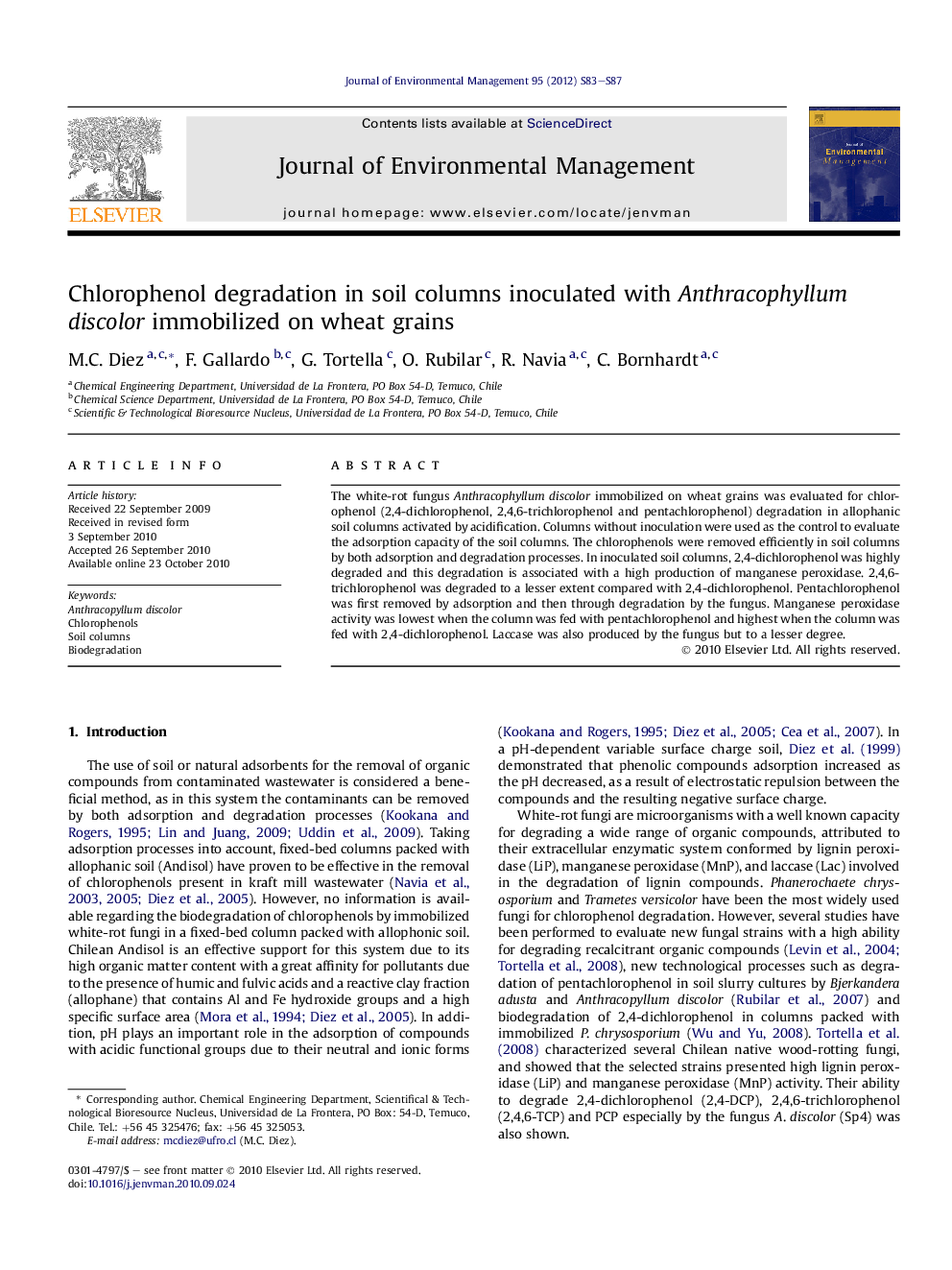| Article ID | Journal | Published Year | Pages | File Type |
|---|---|---|---|---|
| 1057032 | Journal of Environmental Management | 2012 | 5 Pages |
The white-rot fungus Anthracophyllum discolor immobilized on wheat grains was evaluated for chlorophenol (2,4-dichlorophenol, 2,4,6-trichlorophenol and pentachlorophenol) degradation in allophanic soil columns activated by acidification. Columns without inoculation were used as the control to evaluate the adsorption capacity of the soil columns. The chlorophenols were removed efficiently in soil columns by both adsorption and degradation processes. In inoculated soil columns, 2,4-dichlorophenol was highly degraded and this degradation is associated with a high production of manganese peroxidase. 2,4,6-trichlorophenol was degraded to a lesser extent compared with 2,4-dichlorophenol. Pentachlorophenol was first removed by adsorption and then through degradation by the fungus. Manganese peroxidase activity was lowest when the column was fed with pentachlorophenol and highest when the column was fed with 2,4-dichlorophenol. Laccase was also produced by the fungus but to a lesser degree.
